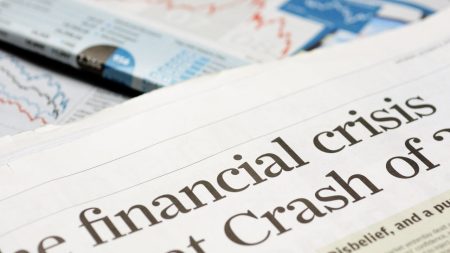Key takeaways
- Your 30s is a time to clarify your financial goals and start ramping up your savings, aiming to set aside 10-15 percent of your income.
- Choose the right tools — a workplace retirement plan and an IRA — to put your money to work.
- With decades until retirement age, people in their 30s can afford to be more aggressive investors, even in a volatile market.
Your 30s are when a lot of things start coming together.
When you reach your 30s, life starts to become a balancing act. You’re (hopefully) starting to hit your career stride and earning more. But you may also be facing some big life events that require a good chunk of savings, such as marriage, having children, buying your first home and, oh yeah, you should probably think about ramping up your retirement savings, too.
“You’re living the lifestyle you want to live, and building a family,” says Tim Kenney, certified financial planner and founder of Seawise Financial in the San Diego area. “And you’ve found that you’ve got a little bit of extra money laying around or your check’s a little bigger than it used to be. And you’ve got places for that to go.”
Here are seven tips for saving and investing in your 30s and taking advantage of perhaps your highest-earning years to date.
1. Solidify a financial plan
Your 30s are a good time to make sure you’ve got a solid financial plan. There are always unexpected things that come up, but you should know your short- and long-term goals and have a plan to get there.
Short-term goals are things that you want to achieve in the next five or so years, such as:
- Saving for a vacation or other travel
- Expanding the family (having kids)
- Buying a house
Long-term goals typically focus on plans for the coming decades, including:
- Retirement
- Saving for your kids’ education
- Launching your own business
The biggest threat to achieving planned financial goals are unplanned expenses. If you don’t have one already, make sure you have an emergency fund saved for any major unexpected costs that may arise, such as:
- An injury or illness that requires hospitalization
- Loss of a job
- Unexpected home repairs
- Automobile repairs
Experts suggest having at least three to six months’ worth of expenses saved.
Need an advisor?
Need expert guidance when it comes to managing your investments or planning for retirement?
Bankrate’s AdvisorMatch can connect you to a CFP® professional to help you achieve your financial goals.
2. Get rid of debt
If you don’t have debt, that’s great. But if you do, paying this off should be a priority. Odds are, debt is going to be at a high annual percentage rate (APR). Even if it’s a “low” APR, paying interest should be avoided because it’s money that could go toward savings down the road.
There are many tools that can help you manage debt, including:
- Debt paydown strategies like the avalanche and snowball methods
- Transferring high-interest debt onto a 0 percent APR credit card
- Exploring debt consolidation loans if you’re unable to keep up with payments
People often want to know which investments will lead them to financial freedom, but paying off high-interest loans is a more certain path than hoping investments turn out exceptionally well.
3. Get your employer’s retirement plan match
If you have access to a workplace retirement plan and your employer matches any portion of your contributions, this is your ticket to free money. At a minimum, you’ll want to contribute enough to earn the match because it is based on the amount of your own money you save in the account.
Matching formulas vary by employer. For example, some offer a dollar-for-dollar match up to a certain percentage of the employee’s salary. Let’s say you earn $60,000 per year and your company offers a 3 percent 401(k) match, up to 6 percent of your salary. You’d need to contribute $1,800 annually to the plan to earn the employer’s $1,800 match. That brings the total contribution to $3,600.
Some employers offer a partial match, such as a 100 percent match on the first 3 percent you contribute and a 50 percent match on the next 2 percent. In that case, you would need to contribute 5 percent of your pay to receive the maximum matching contribution from your boss.
Other rules may apply. For example, a company may require you to work for a certain amount of time before their contributions are vested. If you leave your job before then, you could lose what they’ve contributed to your retirement plan. Some employers take a gradual approach to vesting, where you’re 20 percent vested after one year of employment, with that increasing steadily until you’re 100 percent vested after five years. Other employers offer retirement plans where you’re fully vested after six months or a year.
The money that you contribute to a 401(k) plan is immediately vested and yours to keep, even if you leave the company. Here are four options for taking control of an old 401(k).
4. Contribute to an IRA
If you don’t have an IRA, consider opening one to diversify your investment portfolio and take advantage of its perks, which can include reducing your taxable income. You could also contribute to a Roth IRA, which doesn’t come with an immediate tax benefit, but your withdrawals during retirement will be tax-free. You can also withdraw your contributions at any time without penalty.
You’ll also likely get more investment options in an IRA account than you would from an employer-sponsored plan such as a 401(k), which tends to limit choices to a handful of funds. Investment options in an IRA include:
If you have an old 401(k) from a previous employer, you may want to roll it over into an IRA. If you’re going to open up an investment account for a 401(k) rollover, you may be able to earn a bonus for opening that account. Bankrate tracks the best brokerage account bonuses for you.
5. Maximize your retirement savings
Your 30s are a good time to max out your contributions so that your money can compound for a few decades leading up to retirement.
In the 2025 tax year, the maximum contribution the IRS allows in a 401(k), 403(b), most 457 plans and the federal government’s Thrift Savings Plan is $23,500. The contribution cap on traditional and Roth IRAs is $7,000 for those under age 50. (Your income, marital status and other factors also affect how much of your traditional IRA contribution you’re allowed to deduct and how much you can save in a Roth IRA. Here’s a rundown of rules retirement savers need to know.)
“A good rule of thumb is saving 10 to 15 percent of your income in either your 401(k) at work or if you have IRAs, Roth IRAs, that sort of thing,” says Crystal Rau, certified financial planner and founder of Beyond Balanced Financial Planning LLC in Midland, Texas. “And then if you aren’t hitting that gauge, then you need to focus on maybe cutting back on the spending, and getting a budget in place if you’re having trouble with that.”
6. Stick with stocks for long-term goals
Stock market volatility is scary, but in your 30s, you still have plenty of time to weather the ups and downs and still come out way ahead.
Over the long run, stocks have returned about 9-10 percent annually on average for investors, but that return doesn’t come in a straight line. Volatility is part of investing in stocks, and you’ll want to be sure you have the risk tolerance for it.
A big benefit of investing in your 30s is the amount of time you still have for money to compound before you reach retirement age. Use this long time horizon to your advantage and consider investing in stocks through ETFs and mutual funds.
“If you can do it, if you can stomach it – be as aggressive as you can because your timeline is literally 30-40 years,” Kenney says.
For help crafting a portfolio and keeping it on the tracks, a robo-advisor is a low-cost option. After answering a few questions about your goals and risk tolerance, an algorithm will identify a mix of investments and manage the account on an ongoing basis. You’ll pay an annual fee, but it’s usually less than that of traditional financial advisors.
7. Potentially build wealth by purchasing a home
For most people, a home is the largest asset that they own. Owning a home enables you to build equity, which isn’t possible when you’re a renter. But homeownership is not for everyone.
Make sure you’re ready to embrace the good and the bad that comes with owning a home and are ready to tackle maintenance issues that you may be used to having a landlord handle. You’ll also want to account for the total cost of homeownership and include things like property taxes and maintenance costs in your monthly payment calculation.
How much should you be investing in your 30s?
The exact amount will depend on your individual situation, but saving and investing 10-15 percent of your income is generally a safe bet. Remember that money you invest during your 30s should be worth more than the money you save in your 40s and 50s because it will compound for longer. If you’re able to keep a tight budget during your 30s, you will likely reap the rewards in later decades and during retirement.
FAQs
Bottom line
In your 30s, you have the opportunity to set your future self up to thrive. You can do that by paying down high-interest debts, taking advantage of workplace retirement plan supplements and allowing the compounding engine of the stock market to work its magic. Remember, time is on your side.
— Bankrate’s Dayana Yochim contributed to an update of this article.
Editorial Disclaimer: All investors are advised to conduct their own independent research into investment strategies before making an investment decision. In addition, investors are advised that past investment product performance is no guarantee of future price appreciation.
Read the full article here












